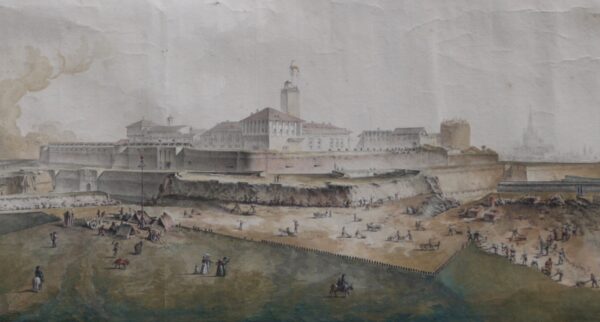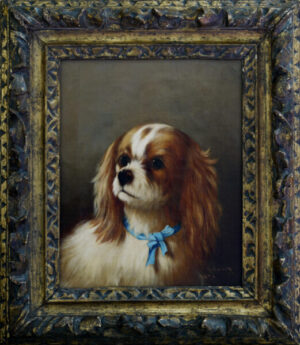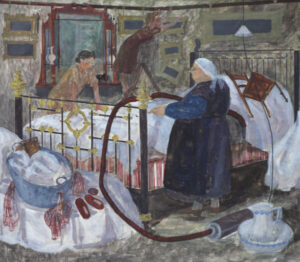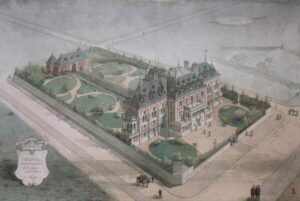Description
Having studied architecture at the University of Turin, Bagetti trained as a watercolourist with Pietro Giacomo Palmieri. He entered the service of Victor Amadeus III of Savoy, King of Sardinia, in 1792 and from the following year he accompanied the Sardinian armies as a military draughtsman, recording their activities. In 1797 he returned to Turin, where he took up a position as a teacher of topographical draughtsmanship, although when the French armies invaded Piedmont he returned to the army, with the rank of capitano ingegnere geografo. He was later welcomed into the French army, where he was commissioned to execute views of the principal sites of the Italian campaign. A large number of these are now in the Musée du Château, Versailles, including The Entrance of the French Troops into Milan, 15 May 1796 (Bonaparte en Italie: aquarelles de Bagetti (1764-1831), exhib. cat., Versailles, 2003).



